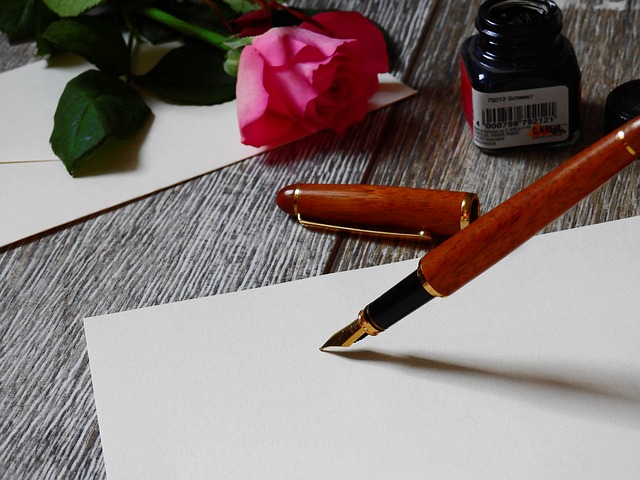
Applying to graduate school means getting together a lot of materials. Most likely, you’ll need transcripts, letters of recommendation, a CV or resume, and a statement of purpose—but do you also need a cover letter for graduate school?
Read on to learn whether you need to submit a graduate school cover letter and how to make one. We’ll also give you six essential tips for making your cover letter for graduate school shine.
Do You Need a Cover Letter for Graduate School?
Generally, you don’t need to submit a cover letter with your graduate school application. Since most programs require you to input your personal information using an online application system, you usually won’t have to submit a separate cover letter as well.
In fact, your statement of purpose already accomplishes most of what a cover letter does: it introduces who you are as well as your academic interests, accomplishments, and goals. Therefore, you most likely won’t need to write a cover letter for your application.
Rarely, a program may ask you to submit a cover letter with your application (or allow you to submit one, even if it’s not required). If you are applying to graduate school by mail, you may want (or need) to include a cover letter in order to highlight your interest in the program and ensure it reaches the correct department.
However, most programs require you to apply online, so you can’t send in an application by mail unless your program allows it. Aside from these relatively isolated cases, you shouldn’t need to submit a cover letter for graduate school.
That said, if you’re applying for a school-related job or internship, it’s common (and often necessary) to submit a cover letter with your application. For example, if you were a current grad student looking to conduct research under a specific professor, you could submit a cover letter to that professor explaining who you are and why you’re interested in conducting research with him or her.
Quick side note: we've created the world's leading online GRE prep program that adapts to you and your strengths and weaknesses. Not sure what to study? Confused by how to improve your score? We give you minute by minute guide.
You don't NEED a prep program to get a great GRE score. But we believe PrepScholar is the best GRE prep program available right now, especially if you find it hard to organize your study schedule and don't know what to study.
Click here to learn how you can improve your GRE score by 7 points, guaranteed.
Or, let’s say you’re applying for a part-time job or internship at your school. In this case, you’ll most likely need to submit a cover letter to introduce yourself, your skills, and your employment history.
How to Write a Cover Letter for Graduate School: Step by Step
If you plan to submit a graduate school cover letter, it’s important to know what to include on it so that you can make a positive impression on the admission committee (or employer).
In this section, we go over the six essential steps for writing a great cover letter for graduate school. With each step, we give you examples using our original graduate school cover letter sample.
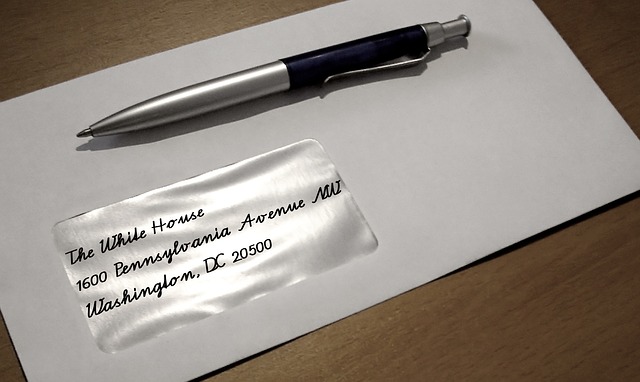
Step 1: Address Your Letter
A clear and organized cover letter is key to making a good impression. Open your letter with your name and contact information followed by your recipient’s name and contact information (as if you were addressing an envelope).
Write your full name first and then use the lines directly beneath it to write your home address. You may also include your phone number and/or email address on a fourth or fifth line after your home address; however, this is optional.
Next, insert a blank space after your contact information and write today’s date. You may use the month-day-year format (e.g., September 4, 2017) or the more formal day-month-year format (e.g., 4 September 2017). Either is fine!
Leave another blank space after the date and write your recipient’s contact information (i.e., to whom you’re sending your cover letter and application).
The name you use here depends on where you’re sending your application. If applying for admission to a graduate program, address your letter to either the head of the department or the head of the admission committee. If you’re not sure whom to address your letter to, contact your program and ask.
Write the name of the recipient with his or her title, if applicable. On the next line, write the name of the department/school for which the recipient works along with the address of the department/school.
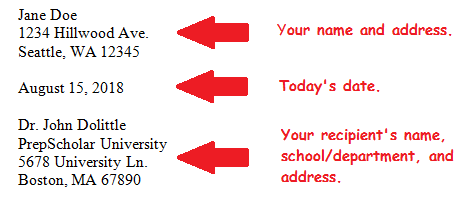
Step 2: Use a Salutation
Like all letters, you should begin your cover letter with a greeting, or salutation, to your recipient.
The most common salutation for cover letters is “Dear [Recipent’s Name]” followed by a comma or a colon. A comma is a little less formal than a colon, but either mark is acceptable.
If you can’t figure out whom to address your cover letter to, write, “Dear Head of Admissions,” “Dear Graduate Coordinator,” or “To Whom It May Concern.” All of these salutations are acceptable, though less personal than a name; thus, it’s best to find a specific person to address your letter to.
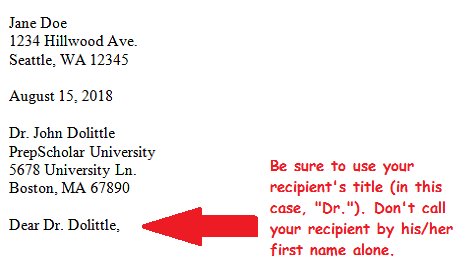
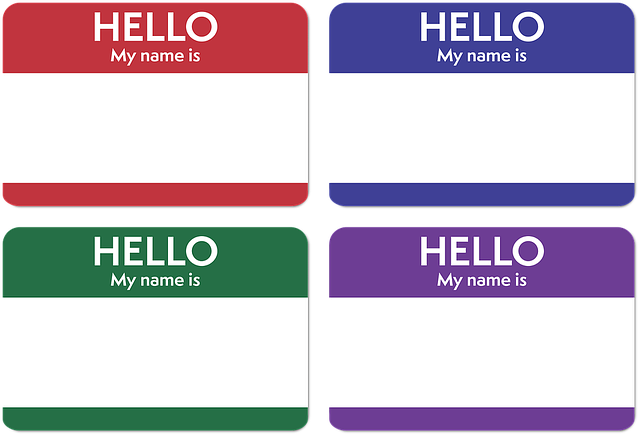
Step 3: Introduce Yourself (Paragraph 1)
Now, we get to the heart of the cover letter. Use this first paragraph to briefly introduce yourself and what program or position you’re applying for. Also, talk a little about what your background in the field is, why you’re interested in this position/program, and how you heard about it.
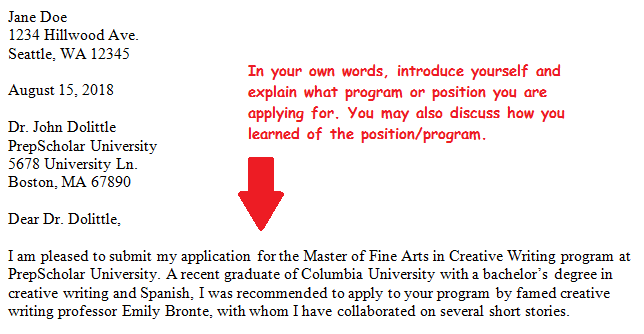
Step 4: Summarize Your Background and Qualifications (Paragraph 2)
For this next paragraph, you’ll give a brief summary of any relevant skills and experiences you have that make you an ideal applicant for this program/position. Be sure to focus on transferrable skills—skills that can be applied across a range of fields and positions.
In addition, think deeply about why you’re drawn to this program/school and what it can do for you. What are your research interests and how will this program help you fulfill them? What do you plan to do after completing the program?
Finally, consider how you’ll fit with the program. Do your interests match what the program offers or specializes in? Are there any specific professors or faculty members you wish to work with?
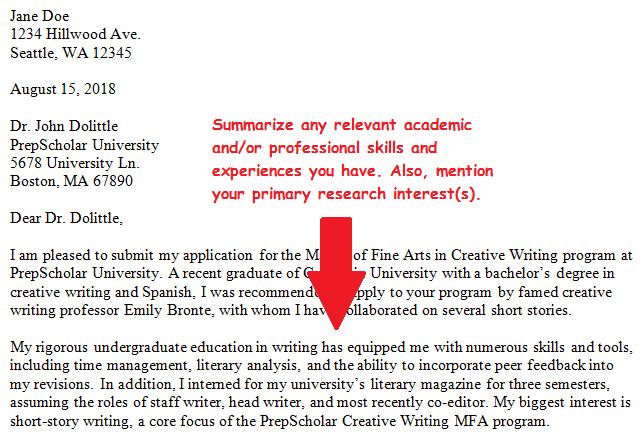

Step 5: Thank Your Reader and List Enclosed Materials (Paragraph 3)
The final paragraph will be a short concluding paragraph in which you thank your reader(s) and give a list of enclosed materials.
When listing what’s enclosed, you may use commas or insert a short bullet list. Normally, you’ll enclose some or all of the following materials:
- Application for the program/position
- Resume/CV
- Statement of purpose
- Transcripts
- Letters of recommendation
Be sure to list the enclosed materials in the order in which they’re enclosed. Programs may ask you to submit materials in a specific order, so check that you’re following your program’s directions exactly (and aren’t forgetting to include any documents either).
Another option is to include a list of your enclosed materials at the end of your letter instead of in this final paragraph (see step 6 for more information).
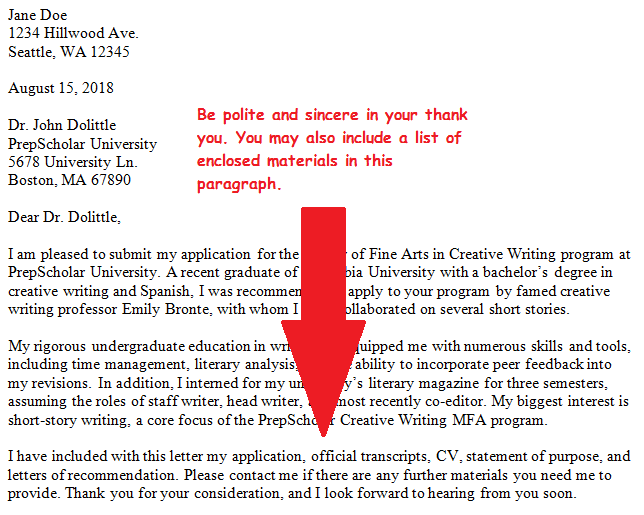
Step 6: Add a Closing Greeting
The last step is to wrap up your letter with a polite closing salutation. There are many greetings you can use to close your letter, such as “Sincerely,” “Yours Truly,” “Warm Regards,” and “Respectfully Yours.”
Want to improve your GRE score by 7 points? We have the industry's leading GRE prep program. Built by world-class instructors with 99th percentile GRE scores, the program learns your strengths and weaknesses through machine learning data science, then customizes your prep program to you so you get the most effective prep possible.
Try our 5-day full access trial for free:
After this greeting, insert a blank line and then type your name. Traditionally, you’d insert three or four blank spaces before typing your name; these spaces would then be used to sign your name in pen. Nowadays it’s OK to skip this step, especially if you’re trying to save space!
Take care to avoid any overly sentimental greetings, such as “Love” or “Forever Yours,” as these are inappropriate for a professional cover letter. Likewise, avoid using the single-word closing “From,” as this can sound a bit rigid and emotionless.
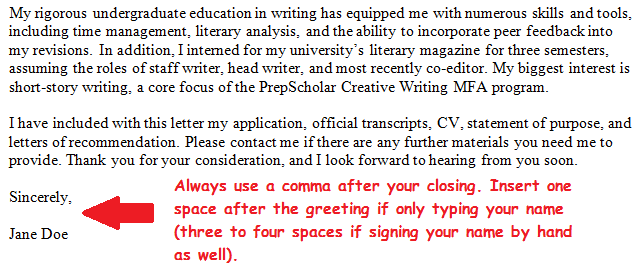
As I mentioned before, you may also insert a list of enclosed materials after your greeting (if you didn’t list them in your concluding paragraph). To do this, insert a space after your typed name and write “Enclosed,” “Enclosure,” or “Enc” followed by a colon. Then, insert a bullet list of the enclosed materials (in the order in which they’re enclosed). Here’s an example:


6 Tips for a Great Graduate School Cover Letter
Your cover letter for graduate school needs to make a great first impression on your program’s admission committee. Here are our top tips for ensuring your cover letter exceeds even your own expectations.
#1: Use a Polite, Professional, and Positive Tone
Because your cover letter is the first document the admission committee will see, be sure to do the following:
- Avoid slang and casual phrases. Nothing says unprofessional like “gotta” and “gonna,” so limit these words to conversations only. Remember, the cover letter is a formal document, much like an essay for school, so it’s better to err on the side of too formal than on the side of too casual.
- Be enthusiastic. Nobody wants to admit an unenthusiastic applicant, so use strong, positive words to convey your pleasure in applying to the program. Stick with upbeat words and phrases such as “happy,” “pleased,” “excited,” “thankful,” “accomplished,” etc.
- Thank your readers. Being polite is all about saying “thank you.” In your letter, thank your readers for their consideration and make it clear that you understand they’re spending a lot of time looking over your application. Don’t thank them over and over, though—this wastes valuable space and ultimately makes you sound desperate!
#2: Be Concise
The cover letter is not the time to delve deep into your personal reasons for pursuing a graduate degree (this is for your statement of purpose!), so be concise without forgoing critical facts about you and why you’re applying.
You’ll typically want to keep your cover letter at a maximum of one page, with no more than two to four paragraphs. Since this letter is short, avoid getting verbose: don’t use tons of flowery language or open with a broad statement. Rather, get straight to the point of who you are, what program you’re applying to, and why you’re a qualified candidate.
If you’re not sure what to include in your letter, read through your resume/CV and statement of purpose to make note of what you’ve already mentioned in those documents. Then, cut down (or remove completely) any similar parts in your cover letter. In short, don’t repeat information you’ve already talked in detail about in other parts of your application.
#3: Use a Neutral Font Face, Size, and Color
Because the cover letter is a professional document, you’ll want to keep its format simple and elegant, as you would a school essay.
Stick with basic “generic” fonts, such as Times New Roman, Arial, Tahoma, and Calibri. Don’t get creative by choosing fonts such as Comic Sans and Chiller—this will make your cover letter look wildly unprofessional and implies you’re not taking the application process seriously.
In terms of size, don’t use a super small or super large font size. You shouldn’t need to squeeze in tons of information on your cover letter, so an 11- or 12-point font should work fine.
Finally, use a regular black font color (on regular white computer paper). Wacky colors, like wacky font faces, will only make you look unprofessional!

#4: Single-Space Text
Unlike school essays, for which you always double-space and indent your paragraphs, the cover letter is single-spaced and uses block paragraphs. This means that instead of pressing the “tab” button to indent each paragraph, you’ll separate each paragraph from the next using a single blank space.
You should also insert a blank line when indicating any sort of transition from one element in your cover letter (e.g., a salutation) to another (e.g., a paragraph). Use our graduate school cover letter sample to better understand how spacing should look.
#5: Align Everything Left
On cover letters, everything needs to be aligned left, from your address and date to your salutations and paragraphs. As I mentioned above, you do not need to indent your paragraphs, so keep these aligned left as well.
There’s no need to justify your paragraphs. In fact, I advise against doing this, as the justification tool on Word often inserts bizarre spacing between words, making paragraphs more difficult to read.
#6: Edit and Proofread
Like every part of your application, take time to edit and proofread your cover letter. Go over the technical and stylistic sides of your writing: make sure your paragraphs flow well together, and check that you haven’t made any glaring grammar, spelling, or formatting mistakes. (For specific tips on formatting, see tips 3-5 above as well as our graduate school cover letter sample.)
I also strongly suggest getting someone else to read your cover letter. A separate pair of eyes will ensure that your letter is as clear and cogent as it can be.
Remember, your cover letter is the first part of your application the admission committee will see, so it must be as close as possible to perfect. Typos and errors will set a negative tone for the rest of your application, even if your other materials are strong. Don’t let the cover letter be your downfall!

Recap: How to Write a Cover Letter for Graduate School
Cover letters for graduate school are generally quite rare. Most programs require you to fill out your personal information and submit materials online, so you won’t usually need to submit a cover letter with your application.
That said, if you are applying for a graduate program by mail, have been asked to submit a cover letter, or are applying for a school-related job or internship, you’ll need to know how to write a cover letter for graduate school.
A graduate school cover letter must include the following elements:
- Your name and address
- The date
- Your recipient’s name and address
- A greeting (usually “Dear [Name]”)
- Two to three paragraphs explaining who you are, what you’re applying for, and why you’re a qualified applicant
- A concluding paragraph thanking your recipient for considering you and including a list of any enclosed materials (e.g., a statement of purpose, transcripts, letters of recommendation, etc.)
- A closing greeting with your name (typed, or typed and signed)
Finally, to make a great cover letter for graduate school, be sure to follow these six tips:
Want to improve your GRE score by 7+ points?
Check out our best-in-class online GRE prep program. We guarantee your money back if you don't improve your GRE score by 7 points or more.
PrepScholar GRE is entirely online, and it customizes your prep program to your strengths and weaknesses. We also feature 2,000 practice questions, official practice tests, 150 hours of interactive lessons, and 1-on-1 scoring and feedback on your AWA essays.
Check out our 5-day free trial now:
- Use a polite, professional, and positive tone
- Be concise
- Use a neutral font face, size, and color
- Single-space text
- Align everything left
- Edit and proofread
You should now have no trouble creating a strong cover letter for graduate school!
What’s Next?
You know how to write a graduate school cover letter—but what about a CV? A resume? Check out our guides on how to write a CV and resume to learn what to include, what to leave out, and how to raise your odds of getting accepted to your program. And if you get stuck, use our high-quality resume and CV templates as a guide!
Need to write an essay for graduate school, too? Learn how to write a personal statement and how to write a statement of purpose using our in-depth guides and expert tips. We’ve also got samples of both personal statements (coming soon) and statements of purpose.
Ready to improve your GRE score by 7 points?
We've written a eBook about the top 5 strategies you must be using to have a shot at improving your GRE score.
Download it for free now:

